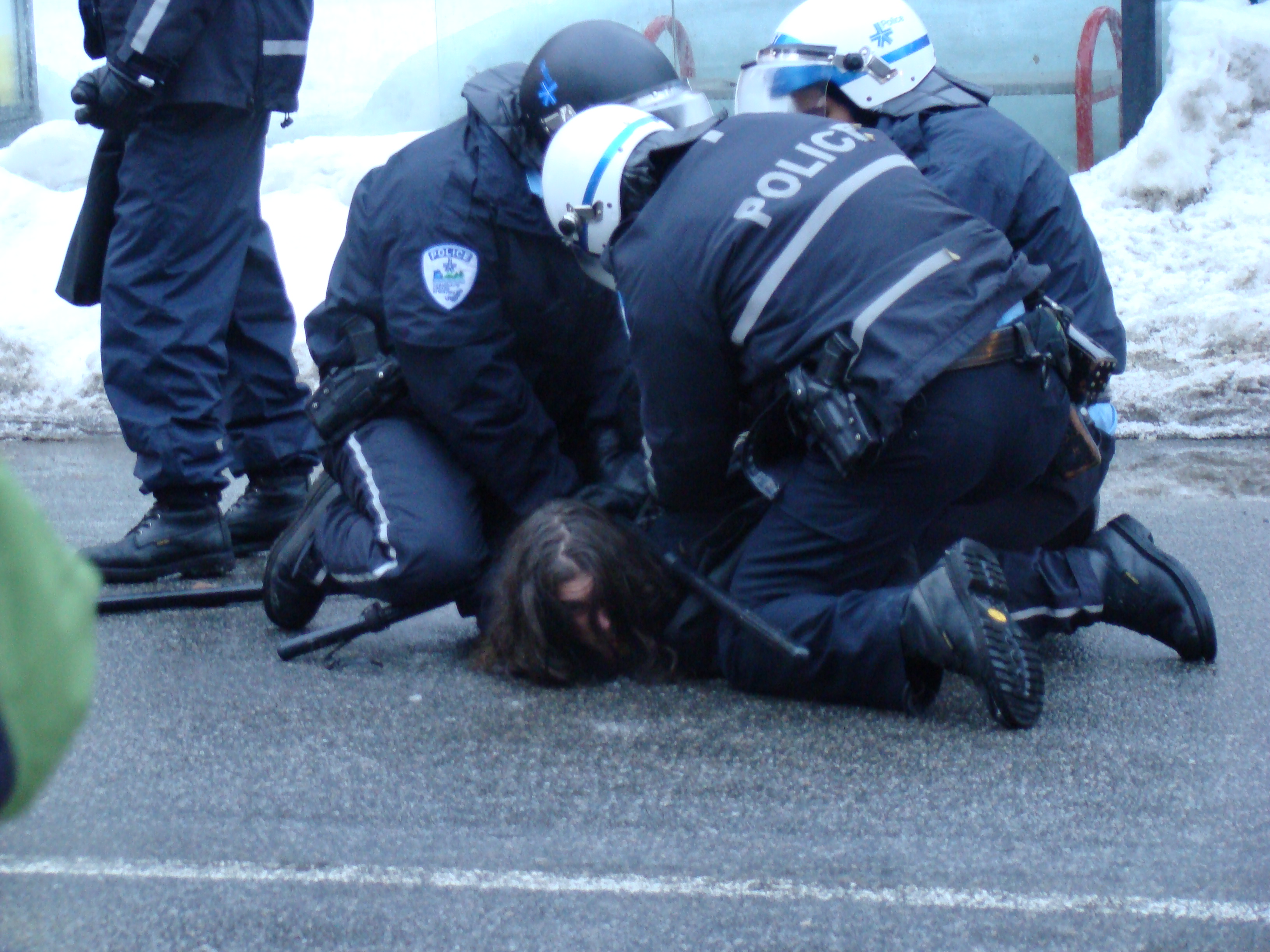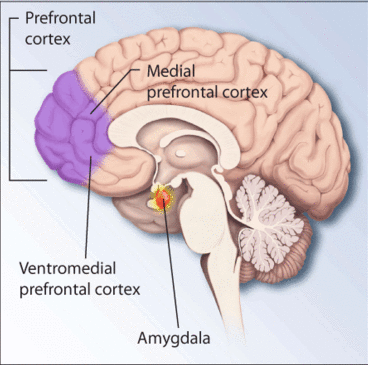|
Betrayal Trauma
Betrayal trauma is defined as a trauma perpetrated by someone with whom the victim is close to and reliant upon for support and survival. The concept was originally introduced by Jennifer Freyd in 1994. Betrayal trauma theory (BTT) addresses situations when people or institutions on which a person relies for protection, resources, and survival violate the trust or well-being of that person. BTT emphasizes the importance of betrayal as a core antecedent of dissociation, implicitly aimed at preserving the relationship with the caregiver. BTT suggests that an individual (e.g. a child or spouse), being dependent on another (e.g. their caregiver or partner) for support, will have a higher need to dissociate traumatic experiences from conscious awareness in order to preserve the relationship. Background Betrayal trauma theory emerged to integrate evolutionary processes, mental modules, social cognitions, and developmental needs with the extent to which the fundamental ethic of hum ... [...More Info...] [...Related Items...] OR: [Wikipedia] [Google] [Baidu] |
Psychological Trauma
Psychological trauma (also known as mental trauma, psychiatric trauma, emotional damage, or psychotrauma) is an emotional response caused by severe distressing events, such as Major trauma, bodily injury, Sexual assault, sexual violence, or other threats to the life of the subject or their loved ones; indirect exposure, such as from watching television news, may be extremely distressing and can produce an involuntary and possibly overwhelming physiological stress response, but does not always produce trauma ''per se''. Examples of distressing events include violence, rape, or a Terrorism, terrorist attack. Short-term reactions such as acute stress disorder, psychological shock and denial, psychological denial typically follow. Long-term reactions and effects include flashback (psychology), flashbacks, panic attacks, insomnia, nightmare disorder, difficulties with interpersonal relationships, post-traumatic stress disorder (PTSD), and brief psychotic disorder. Physical symptoms ... [...More Info...] [...Related Items...] OR: [Wikipedia] [Google] [Baidu] |
Police Brutality
Police brutality is the excessive and unwarranted use of force by law enforcement against an individual or Public order policing, a group. It is an extreme form of police misconduct and is a civil rights violation. Police brutality includes, but is not limited to, asphyxiation, beatings, shootings, improper takedowns, Racism, racially-motivated violence and unwarranted use of Electroshock weapon, tasers. History The first modern police force is widely regarded to be the Metropolitan Police Service in London, established in 1829. However, some scholars argue that early forms of policing began in the Americas as early as the 1500s on plantation colonies in the Caribbean. These slave patrols quickly spread across other regions and contributed to the development of the earliest examples of modern police forces. Early records suggest that labor strikes were the first large-scale incidents of police brutality in the United States, including events like the Great Railroad Strike ... [...More Info...] [...Related Items...] OR: [Wikipedia] [Google] [Baidu] |
Trauma Types
Trauma most often refers to: *Psychological trauma, in psychology and psychiatric medicine, refers to severe mental and emotional injury caused by distressing events *Traumatic injury, sudden physical injury caused by an external force, which does not rise to the level of major trauma **Major trauma, in physical medicine, severe physical injury caused by an external source Trauma may also refer to: Medicine * Birth trauma, trauma incurred by neonates during childbirth *Dental trauma, trauma to the teeth and/or gums and/or nearby soft tissues *Trauma team, a multidisciplinary group of healthcare workers who collectively work together * Traumatic alopecia, a cutaneous condition that results from the forceful pulling out of the scalp hair * Traumatic anserine folliculosis, a curious gooseflesh-like follicular hyperkeratosis * Traumatic bone cyst, a condition of the jaws *Traumatic neuroma, a type of neuroma which results from trauma to a nerve, usually during a surgical procedure * ... [...More Info...] [...Related Items...] OR: [Wikipedia] [Google] [Baidu] |
Deception
Deception is the act of convincing of one or many recipients of untrue information. The person creating the deception knows it to be false while the receiver of the information does not. It is often done for personal gain or advantage. Tort of deceit, Deceit and dishonesty can also form grounds for civil litigation in tort, or contract law (where it is known as misrepresentation or fraudulent misrepresentation if deliberate), or give rise to criminal prosecution for fraud. Types Communication The Interpersonal deception theory, Interpersonal Deception Theory explores the interrelation between communicative context and sender and receiver cognitions and behaviors in deceptive exchanges. Some forms of deception include: * Lies: making up information or giving information that is the opposite or very different from the truth. * Equivocations: making an indirect, ambiguous, or contradictory statement. * Lying by omission, Concealments: omitting information that is important o ... [...More Info...] [...Related Items...] OR: [Wikipedia] [Google] [Baidu] |
Relational-cultural Therapy
Relational-cultural theory, and by extension, relational-cultural therapy (RCT) stems from the work of Jean Baker Miller, M.D. Often, relational-cultural theory is aligned with the feminist and or multicultural movements in psychology. In fact, RCT embraces many social justice aspects from these movements. RCT was developed in Wellesley, Massachusetts in the 1970s through the work of psychiatrist, Jean Baker Miller (Toward a New Psychology of Women), psychologists, Judith V. Jordan, Janet Surrey, and Irene Stiver at the Stone Center at Wellesley College in reaction to psychodynamic theory. The Stone Center at Wellesley College and the Jean Baker Miller Training Institute are the hubs of RCT research and training and are perhaps best known for their ''Working Papers'' series, collective works that are continuously considered for review and reconsideration. RCT depicts culture as an active agent in relational processes that share human possibility. Some have noted that RCT's tradi ... [...More Info...] [...Related Items...] OR: [Wikipedia] [Google] [Baidu] |
Intergenerationality
Intergenerationality is interaction between members of different generations.Klimczuk, Andrzej, ''Intergenerationality, Intergenerational Justice, Intergenerational Policies'', n:S. Thompson (ed.), ''Encyclopedia of Diversity and Social Justice'', Rowman & Littlefield, Lanham 2015, pp. 419-423; Lüscher, Kurt, Hoff, Andreas, Klimczuk, Andrzej, Lamura, Giovanni, Renzi, Marta, Oliveira, Paulo d.S., Sánchez, Mariano, Viry, Gil, Widmer, Eric, Neményi, Ágnes, Veress, Enikő, Bjursell, Cecilia, Boström, Ann-Kristin, Rapolienė, Gražina, Mikulionienė, Sarmitė, Oğlak, Sema, Canatan, Ayşe, Vujović, Ana, Svetelšek, Ajda, Gavranović, Nedim, Ivashchenko, Olga, Shipovskaya, Valentina, Lin, Qing, Wang, Xiying, '' Generations, intergenerational relationships, generational policy. A multilingual compendium - Edition 2017'', Universität Konstanz, Konstanz 2017; Sociologists study many intergenerational issues, including equity, conflict, and mobility. Public health researchers and tox ... [...More Info...] [...Related Items...] OR: [Wikipedia] [Google] [Baidu] |
Borderline Personality Disorder
Borderline personality disorder (BPD) is a personality disorder characterized by a pervasive, long-term pattern of significant interpersonal relationship instability, an acute fear of Abandonment (emotional), abandonment, and intense emotional response, emotional outbursts. People diagnosed with BPD frequently exhibit self-harming behaviours and engage in risky activities, primarily due to Emotional dysregulation, challenges regulating emotional states to a healthy, stable baseline. Symptoms such as Dissociation (psychology), dissociation (a feeling of Emotional detachment, detachment from reality), a pervasive sense of emptiness, and distorted sense of self are prevalent among those affected. The onset of BPD symptoms can be triggered by events that others might perceive as normal, with the disorder typically manifesting in early adulthood and persisting across diverse contexts. BPD is often Comorbidity, comorbid with substance use disorders, depressive disorders, and eating ... [...More Info...] [...Related Items...] OR: [Wikipedia] [Google] [Baidu] |
Substance Use Disorder
Substance use disorder (SUD) is the persistent use of drugs despite substantial harm and adverse consequences to self and others. Related terms include ''substance use problems'' and ''problematic drug or alcohol use''. Along with substance-induced disorders (SID) they are encompassed in the category substance-related disorders. Substance use disorders vary with regard to the average age of onset. It is not uncommon for those who have SUD to also have other mental health disorders. Substance use disorders are characterized by an array of mental, emotional, physical, and behavioral problems such as chronic guilt; an inability to reduce or stop consuming the substance(s) despite repeated attempts; operating vehicles while intoxicated; and physiological withdrawal symptoms. Drug classes that are commonly involved in SUD include: alcohol (alcoholism); cannabis; opioids; stimulants such as nicotine (including tobacco), cocaine and amphetamines; benzodiazepines; barbiturates; a ... [...More Info...] [...Related Items...] OR: [Wikipedia] [Google] [Baidu] |
Post-traumatic Stress Disorder
Post-traumatic stress disorder (PTSD) is a mental disorder that develops from experiencing a Psychological trauma, traumatic event, such as sexual assault, domestic violence, child abuse, warfare and its associated traumas, natural disaster, traffic collision, or other threats on a person's life or well-being. Symptoms may include disturbing thoughts, feelings, or dreams related to the events, mental or physical distress (medicine), distress to Psychological trauma, trauma-related cues, attempts to avoid trauma-related cues, alterations in the way a person thinks and feels, and an increase in the fight-or-flight response. These symptoms last for more than a month after the event and can include triggers such as misophonia. Young children are less likely to show distress, but instead may express their memories through play (activity), play. Most people who experience traumatic events do not develop PTSD. People who experience interpersonal violence such as rape, other sexual ... [...More Info...] [...Related Items...] OR: [Wikipedia] [Google] [Baidu] |
Dissociation (psychology)
Dissociation is a concept which concerns a wide array of experiences, ranging from a mild emotional detachment from the immediate surroundings, to a more severe disconnection from physical and emotional experiences. The major characteristic of all dissociative phenomena involves a detachment from reality, rather than a false perception of reality as in psychosis. The phenomena are diagnosable under the ''DSM-5'' as a group of disorders as well as a symptom of other disorders through various diagnostic tools. Its cause is believed to be related to neurobiological mechanisms, trauma, anxiety, and psychoactive drugs. Research has further related it to suggestibility and hypnosis. History French philosopher and psychologist Pierre Janet (1859–1947) is considered to be the author of the concept of dissociation. Unlike some conceptions of dissociation, Janet did not believe that dissociation was a psychological defense. Janet claimed that dissociation occurred only in person ... [...More Info...] [...Related Items...] OR: [Wikipedia] [Google] [Baidu] |
John Bowlby
Edward John Mostyn Bowlby (; 26 February 1907 – 2 September 1990) was a British psychiatrist and psychoanalyst, notable for his interest in child development and for his pioneering work in attachment theory. A ''Review of General Psychology'' survey, published in 2002, ranked Bowlby as the 49th most cited psychologist of the 20th century. Family background Bowlby was born in London to an upper-middle-income family. He was the fourth of six children and was brought up by a nanny in the British fashion of his class at that time: the family hired a nanny who was in charge of raising the children, in a separate nursery in the house.Van Dijken, S. (1998). John Bowlby: His Early Life: A Biographical Journey into the Roots of Attachment Theory. London: Free Association Books Nanny Friend took care of the infants and generally had two other nursemaids to help her. Bowlby was raised primarily by nursemaid Minnie who acted as a mother figure to him and his siblings. His father, Sir ... [...More Info...] [...Related Items...] OR: [Wikipedia] [Google] [Baidu] |




